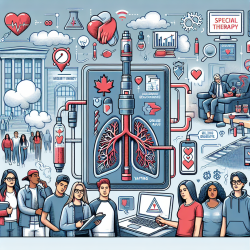Introduction
Helicopter Emergency Medical Services (HEMS) have long been a topic of debate in the medical community. With their ability to quickly transport patients from accident scenes to hospitals, they offer a potential lifeline for those in critical condition. But what does the research say about their effectiveness? A recent review of literature from 2007 to 2011 sheds light on the outcomes associated with HEMS and provides valuable insights for practitioners looking to enhance their skills or conduct further research.
Understanding the Benefits of HEMS
The review, titled "Helicopter EMS Transport Outcomes Literature: Annotated Review of Articles Published 2007–2011," highlights several key findings that underscore the benefits of HEMS. These include:
- Improved Patient Outcomes: Studies have shown that HEMS can significantly improve survival rates, particularly in trauma cases. The rapid transport and advanced care provided by HEMS teams can make a crucial difference in patient recovery.
- Time Savings: In emergency situations, every minute counts. HEMS can drastically reduce transport times, ensuring patients receive timely interventions that can save lives.
- Access to Specialized Care: HEMS enables patients in remote or rural areas to access specialized medical facilities that they might not reach in time otherwise.
Implementing Research Findings in Practice
For practitioners, the insights from the review can be instrumental in improving emergency response strategies. Here are some ways to implement these findings:
- Enhance Training: Ensure that your team is well-trained in both the technical and medical aspects of HEMS. This includes understanding the protocols for rapid sequence intubation and advanced life support.
- Optimize Dispatch Protocols: Use evidence-based criteria to determine when HEMS should be deployed. This ensures that resources are used efficiently and patients receive the care they need promptly.
- Collaborate with Local Hospitals: Establish strong communication channels with receiving hospitals to streamline the transfer process and ensure that patients receive immediate care upon arrival.
Encouraging Further Research
While the review provides a comprehensive overview of HEMS outcomes, there is always room for further research. Practitioners are encouraged to explore the following areas:
- Cost-Effectiveness: Investigate the economic impact of HEMS to ensure that it remains a viable option for healthcare systems.
- Long-Term Outcomes: Conduct studies to assess the long-term health outcomes of patients transported by HEMS compared to those transported by ground.
- Technology Integration: Explore how emerging technologies, such as telemedicine, can be integrated into HEMS to enhance patient care.
Conclusion
The research on HEMS provides compelling evidence of its benefits in improving patient outcomes, particularly in trauma cases. By implementing these findings in practice and encouraging further research, practitioners can continue to enhance the effectiveness of emergency medical services.
To read the original research paper, please follow this link: Helicopter EMS Transport Outcomes Literature: Annotated Review of Articles Published 2007–2011.










